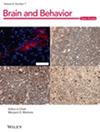Association Between Cumulative Atherogenic Index of Plasma and New-Onset Stroke Among Middle-Aged and Elderly Chinese Patients With Stages 0–3 Cardiovascular-Kidney-Metabolic Syndrome: A Longitudinal Cohort Study
Abstract
Background
Cardiovascular-kidney-metabolic (CKM) syndrome represents the interaction among chronic kidney disease, cardiovascular disease, and metabolic disorders. However, the association between the cumulative atherogenic index of plasma (CumAIP) and the risk of incident stroke in individuals with CKM syndrome has not been fully established.
Methods
Data were obtained from the China Health and Retirement Longitudinal Study (CHARLS). A total of 4674 participants were categorized into quartiles according to CumAIP values and further stratified by CKM syndrome stages (0–3). Multivariable Cox regression models were applied to examine the relationship between CumAIP and incident stroke, while restricted cubic spline (RCS) models were used to explore potential nonlinear associations. Subgroup analyses evaluated possible effect modifications by age, sex, smoking, alcohol consumption, hypertension, and diabetes.
Results
Over the follow-up period, 261 (5.6%) incident strokes were documented, with incidence increasing from 2.5% in CKM stages 0 and 1 to 6.3% in stages 2 and 3. After adjusting for potential confounders, each unit increase in CumAIP was associated with a 149% higher risk of incident stroke (hazard ratio [HR] = 2.49, 95% confidence interval [CI]: 1.69–3.65). Participants in the highest CumAIP quartile showed a 144% higher risk compared with those in the lowest quartile (HR = 2.44, 95% CI: 1.61–3.70). RCS analysis suggested a linear association (p for nonlinearity = 0.182).
Conclusion
Higher CumAIP is significantly associated with increased risk of incident stroke, particularly among individuals with advanced CKM stages and high-risk subgroups, including older adults, smokers, and those with diabetes.


 求助内容:
求助内容: 应助结果提醒方式:
应助结果提醒方式:


